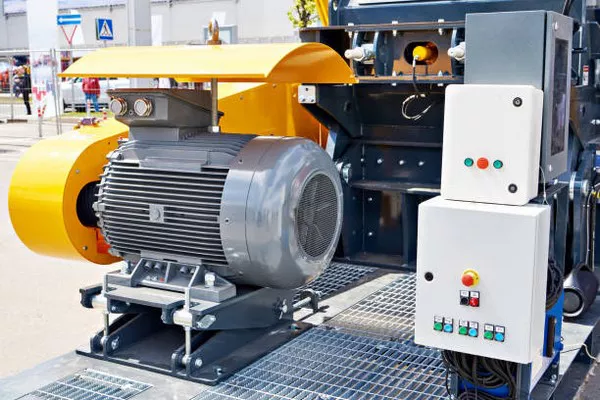In the realm of electrical engineering, the brushless AC generator stands as a marvel of innovation and efficiency. It forms the backbone of numerous applications, from powering homes during outages to propelling industrial machinery. Despite its ubiquity, many remain mystified by the intricate workings behind its seamless generation of electricity. In this article, we delve into the core principles and mechanisms that underpin the functionality of a brushless AC generator.
1. Understanding the Basics of AC Generation
Alternating Current (AC) Generation
At its essence, a generator converts mechanical energy into electrical energy. The fundamental principle behind AC generation lies in Faraday’s law of electromagnetic induction. According to this law, whenever a conductor moves within a magnetic field or experiences a change in magnetic flux, an electromotive force (EMF) is induced in the conductor, resulting in the generation of electricity. This process forms the crux of AC generation.
Components of a Generator
A typical AC generator comprises two main components: a stator and a rotor. The stator is the stationary component consisting of coils of wire arranged around an iron core. These coils serve as the primary windings within which the induced voltage is generated. Conversely, the rotor, also known as the armature, is the rotating component equipped with a set of conductors. As the rotor spins within the magnetic field generated by the stator, an EMF is induced in the armature windings, thereby producing electricity.
2. The Evolution of Brushless Technology
Traditional Brushed Generators
Historically, generators employed brushes and commutators for the transfer of electrical power between the stationary and rotating components. While effective, this design posed inherent limitations such as brush wear, sparking, and maintenance requirements. Additionally, the presence of brushes introduced frictional losses, reducing the overall efficiency of the generator.
Introduction of Brushless Alternators
The advent of brushless alternators revolutionized the landscape of electrical generation. Unlike their brushed counterparts, brushless alternators eliminate the need for brushes and commutators, thereby mitigating associated drawbacks. Instead, these generators utilize electronic circuits to regulate voltage and excitation, offering enhanced reliability, efficiency, and longevity.
3. The Inner Workings of a Brushless AC Generator
Stator Assembly
In a brushless AC generator, the stator assembly remains similar to that of conventional generators, comprising stationary coils wound around an iron core. These coils are strategically arranged to induce a three-phase alternating current when subjected to a varying magnetic field.
Rotor Configuration
Contrary to brushed generators, brushless AC generators feature a rotor assembly equipped with a set of permanent magnets or electromagnets. These magnets are arranged in a specific configuration to create a rotating magnetic field when energized. The rotation of this magnetic field induces an alternating current in the stator windings.
Excitation Control
Central to the operation of a brushless AC generator is the mechanism for excitation control. Instead of relying on physical brushes and commutators, these generators employ electronic circuits to regulate the excitation of the rotor windings. This precise control ensures optimal voltage output and stability across varying load conditions.
Voltage Regulation
Brushless AC generators incorporate sophisticated voltage regulation mechanisms to maintain a steady output voltage. This regulation is achieved through feedback loops that monitor the generated voltage and adjust excitation levels accordingly. By dynamically adapting to load variations, these generators ensure consistent and reliable power delivery.
4. Advantages and Applications
Advantages of Brushless AC Generators
The transition to brushless technology offers several compelling advantages:
- Enhanced reliability and longevity due to the absence of brushes and commutators.
- Reduced maintenance requirements and downtime.
- Improved efficiency resulting from minimized frictional losses.
- Greater flexibility and precision in voltage regulation.
- Compatibility with sensitive electronic equipment.
Applications Across Industries
Brushless AC generators find widespread application across various sectors, including:
- Emergency backup power systems for residential, commercial, and industrial facilities.
- Prime power sources in remote or off-grid locations.
- Auxiliary power units in automotive and aerospace industries.
- Power generation in renewable energy systems such as wind turbines and hydroelectric plants.
- Mobile and portable power solutions for construction sites, events, and outdoor activities.
FAQs:
1. How does a brushless AC generator differ from a brushed generator?
In a brushed generator, electrical power transfer between the stationary and rotating components relies on physical brushes and commutators, whereas a brushless AC generator utilizes electronic circuits for excitation control, eliminating the need for brushes and commutators.
2. What are the main advantages of brushless AC generators?
Brushless AC generators offer enhanced reliability, reduced maintenance requirements, improved efficiency, and greater flexibility in voltage regulation compared to brushed generators.
3. What applications benefit most from brushless AC generators?
Brushless AC generators are well-suited for a wide range of applications, including backup power systems, prime power generation, auxiliary power units, and renewable energy systems, among others.
See Also Demystifying Generators: AC vs. DC
In conclusion
The brushless AC generator stands as a pinnacle of engineering ingenuity, offering unparalleled efficiency, reliability, and versatility in electrical power generation. By harnessing the principles of electromagnetic induction and leveraging advanced electronic control systems, these generators continue to drive innovation and progress across diverse industries.

